Sapper shovels: types and subtleties of use
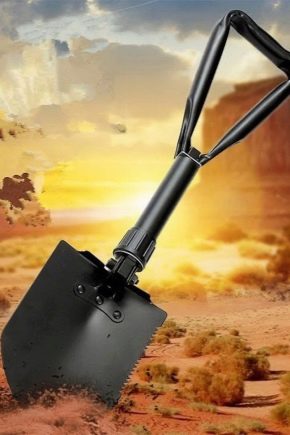
They began to dig the earth a long time ago. Such a need has existed for centuries not only among farmers, gardeners, archaeologists and builders, but also in the armed forces. The answer to this need has become the tool, which will now be discussed.

What it is?
With the advent of rapid-fire hand weapons, with an increase in the range of artillery, the methods of waging war in the second half of the 19th century changed significantly. Then the fastest possible construction of shelters in the field became relevant. Therefore, all infantry units in all armies began to be equipped with a small entrenching tool. It turned out to be much more practical than the garden tools that were used earlier. It is believed that the sapper shovel was invented in the late 1860s, at least then the first known patent for such a design was issued in Denmark.
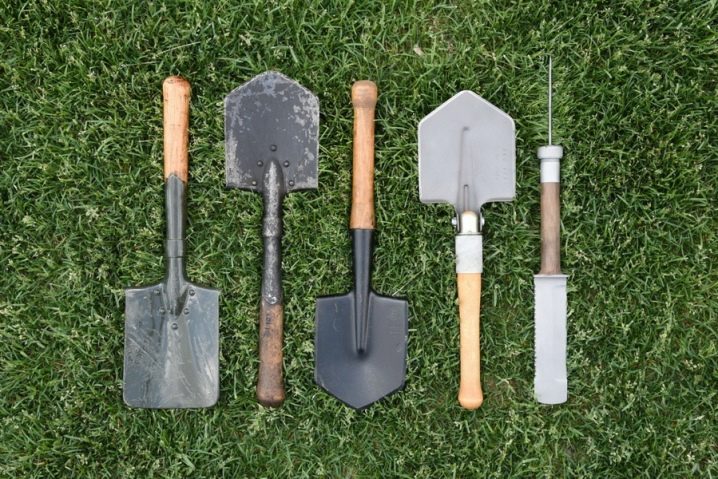
However, in Copenhagen and the surrounding area, the novelty was not appreciated. Initially, its production was mastered in Austria. In a matter of years, a similar tool was adopted everywhere. As befits in the armies, they immediately developed detailed instructions and manuals for use. They turned out to be so good and accurate that so far they have only added small nuances.
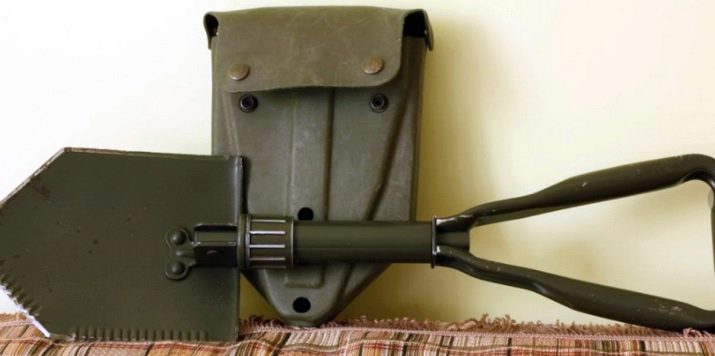
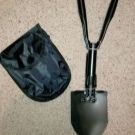
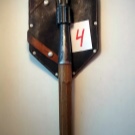
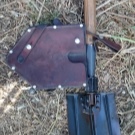
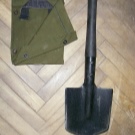

The appearance of the traditional sapper blade has hardly changed. However, thanks to the development of metallurgy, its chemical composition has repeatedly changed. The search for optimal alloys was constantly carried out (and is being carried out now). Despite the name "sapper", the shovel actually turned out to be multifunctional, since it is used by all units of the ground forces directly participating in the battles. Even tankers and motorized riflemen sometimes need to dig in. And for special units going into a raid on enemy territory, this is also useful.
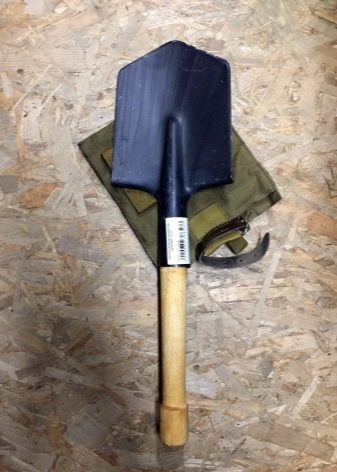
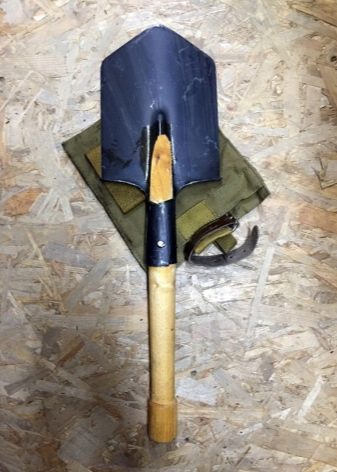
The developers are constantly trying to increase the productivity of the tool, because the faster the trench is dug, the less losses will be. Soon, the sapper shovel began to be used as an improvised weapon, and then it was appreciated outside the armed forces. Most often, such a tool is used by tourists and hunters, fishermen and members of various expeditions. They need it to cut branches and break off ice. In skillful hands, a sapper shovel helps to harvest tent stakes, and easily chops wire.
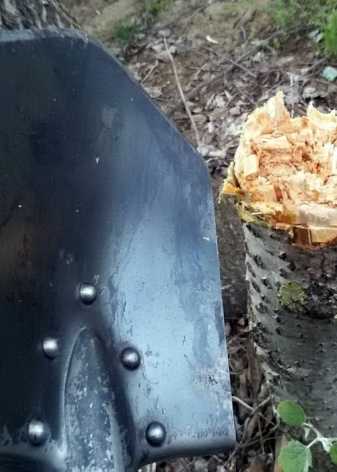
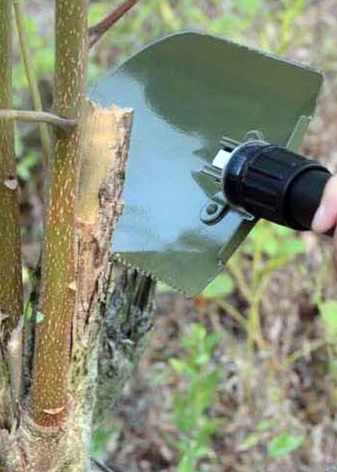
Compactness (in comparison with household counterparts) provides the following features
- take up less space in your travel luggage;
- exclude restriction of movements;
- calmly wade through dense thickets, without clinging to branches and trunks;
- paddle while on a boat or raft;
- support the jack;
- protect yourself from predators;
- chopping wood.
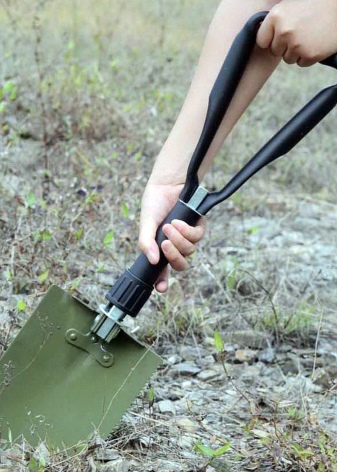
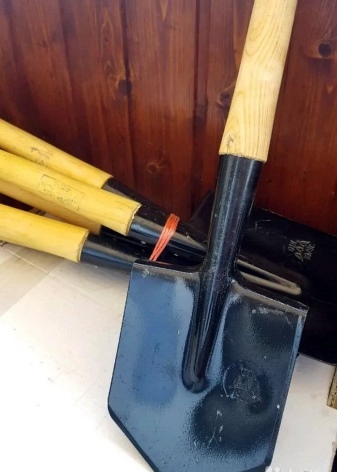
As a result of field tests in the 19th century, it was found that the efficiency of a small shovel reaches 70% of that of a large format product. A slightly lower digging performance is justified by the convenience of working in any position, even lying down. In peaceful conditions, such a need rarely arises, but the comfort of digging on their knees is highly appreciated by consumers. Those versions of the tool, which are intended for combat use, inflict terrible trauma in their consequences. Already the first experience of such actions showed that a sapper blade combines the properties of a bayonet and an ax.
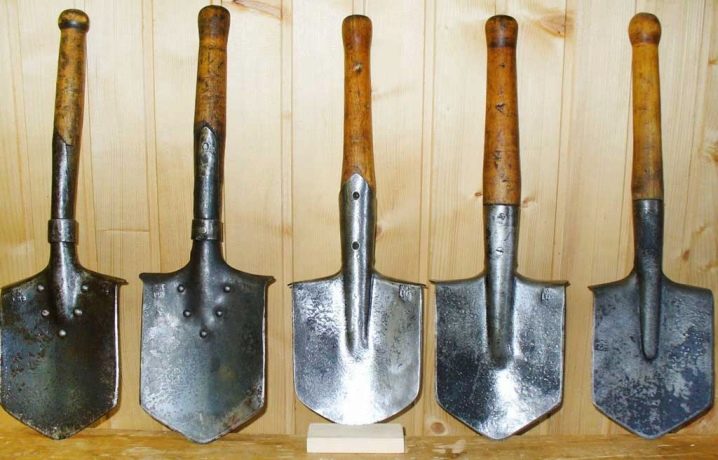
Small sapper blades were created from forged metal for a relatively short time.The great need for them forced the transition to welded technology. The width of the bayonet in the classic version is 15 cm, and its length is 18 cm. Since 1960, thinner steel has been used for the manufacture of a sapper shovel. Now its layer does not exceed 0.3-0.4 cm.
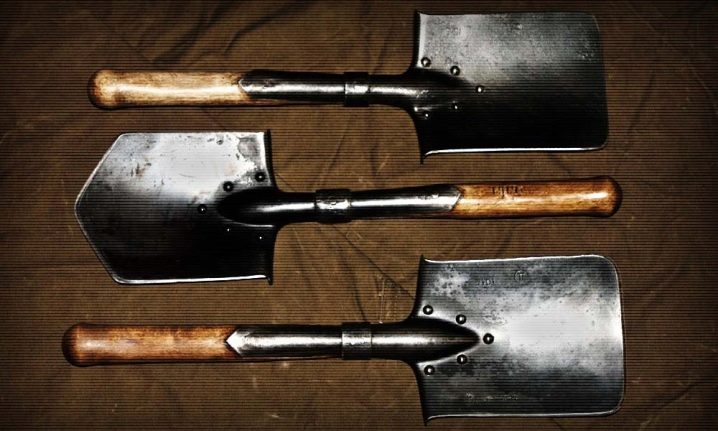
Design
The infantry (sapper) blade, which is used in Russia, has only 2 components: a steel blade and a wood handle. The simplicity of this design is due to the fact that reliability considerations come first. Since the tool is necessarily created with the expectation of combat use, the bayonet is made only of forged hardened steels. Hardwoods are used for the manufacture of cuttings; which is important, they cannot be painted.
The expanding tip allows for a stronger grip of the shovel, which is important both during tedious work and in hand-to-hand combat.
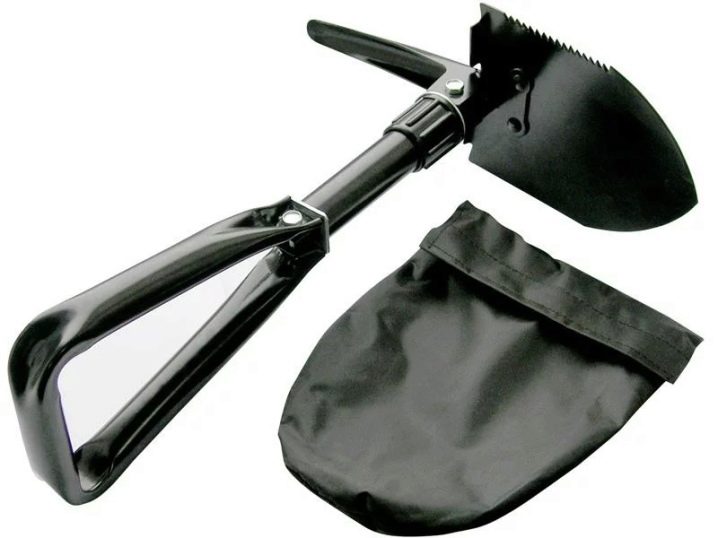
But the number of corners of the bayonet can be different - 5 or 4, occasionally there are oval instruments. The edges that plunge directly into the ground must be sharpened as sharply as possible. The required sharpness is determined by what kind of soil you plan to dig. In most cases, the sidewalls are also sharpened in order to more efficiently dig root-rich soil. Mostly combat varieties are equipped with lanyards, and their edges are sharpened as best as possible.

Specifications
Thanks to the creation of a large number of options for a sapper shovel, you can select the best tool for yourself. Of the sizes, length is the most important. The lightest shoulder blades are no longer than 80 cm. Sometimes, but very rarely, the length is limited to 70 or even 60 cm. Such a tool is preferable for camping use, since it is easy to place it in the side pockets of backpacks. With the help of these devices, it is possible to perform the following tasks:
- chopping wood;
- prepare a fireplace;
- dig a hole;
- work effectively in confined spaces.
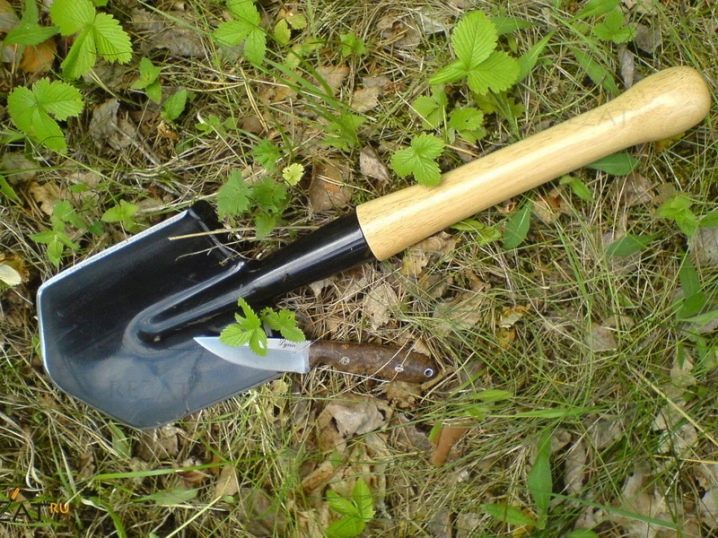
But small shovels are not intended for home use. With them, you need to bend too much and often. Larger options are almost universal, their length in most cases is limited to 110 cm. It can be used to accomplish tasks such as:
- dig a foundation pit;
- work in the garden and vegetable garden;
- perform other works that are not available for ordinary garden tools.
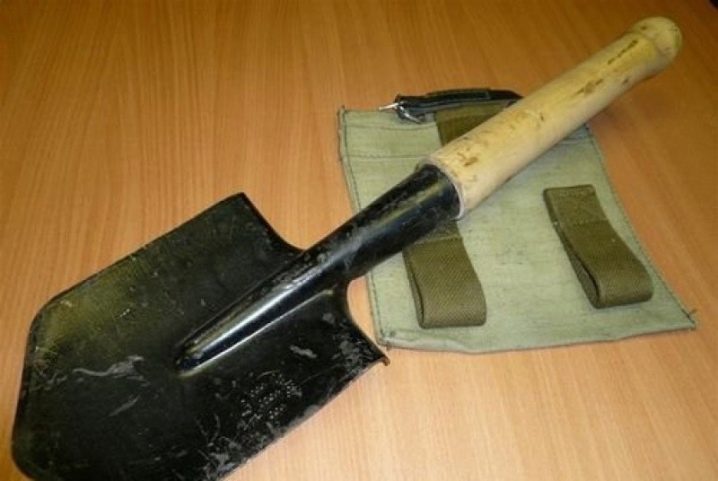
Folding versions are 100–170 cm long. Leading manufacturers have dozens of models in their assortment. There are a number of layout methods. The most commonly used applied technique is the use of leverage. Such a shovel has a rectangular or pentagonal bucket.
Varieties
The classic square look of a sapper shovel is a thing of the past, even in the military. Only in the First World War and a little later was its ability to protect against bullets appreciated. As for the sapper shovels sold today on the civilian market, products of a triangular shape are least often found. They are produced only in Europe. The main goal is to loosen especially hard soil, as well as to wash out gold, and work with other rocks.
Both small and large sapper shovels of the interwar period and World War II were rectangular in shape. There are still a number of manufacturers who clearly prefer buckets of this configuration. In addition to increased productivity, it is good in that it allows you to form extremely flat trenches.
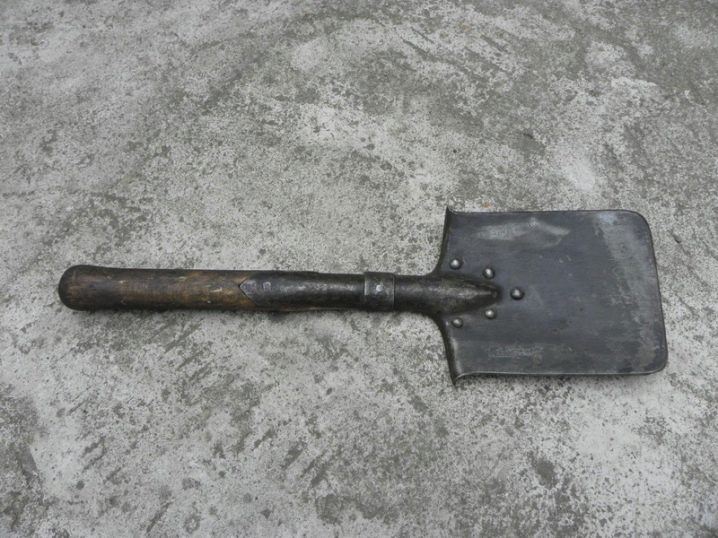
Since 1980, pentagonal designs have become very popular. They allow you to dig even large areas, while spending a minimum of effort. The alignment of trenches and pits is somewhat more complicated. Sapper shovels with a crescent at the end are sometimes used. The practical usefulness of such a device is highly questionable, since it is made by only a few companies trying to stand out in this way.
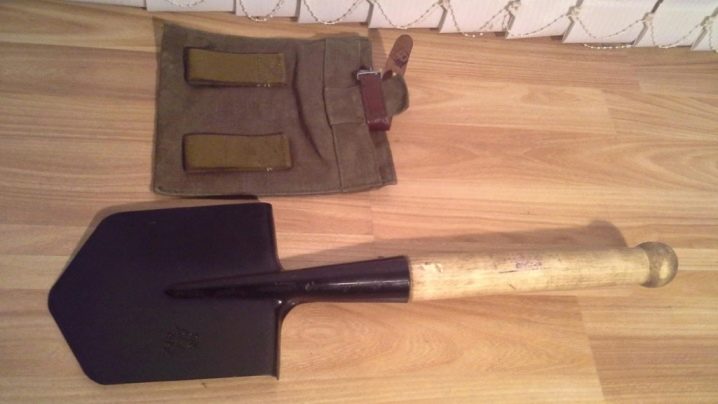
The folding version is needed in cases where you have to drive or walk, and then perform a significant amount of work. In such a situation, it is inconvenient to use a full-size bayonet shovel of a traditional or even a sapper model. And a very small one is not productive enough. The folding tool allows you to resolve this contradiction.
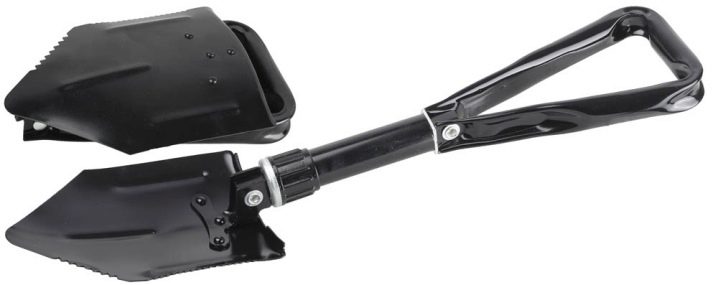
There is a gradation of sapper shovels and the type of material used. Simple black metal captivates with its cheapness, but it is not strong enough and corrodes easily. Stainless alloys are much more stable and last longer, while their use immediately raises the price by 20-30%. The titanium sapper shovel is lightweight and durable. Titanium does not corrode in environments where trenching tools are commonly used. However, these advantages are overshadowed by the high cost - the cost of a shovel made of this material is three times higher than that of a similar steel product. Duralumin is very light and does not corrode at all, but it bends easily. This is most likely a one-time solution for 1 camping trip.
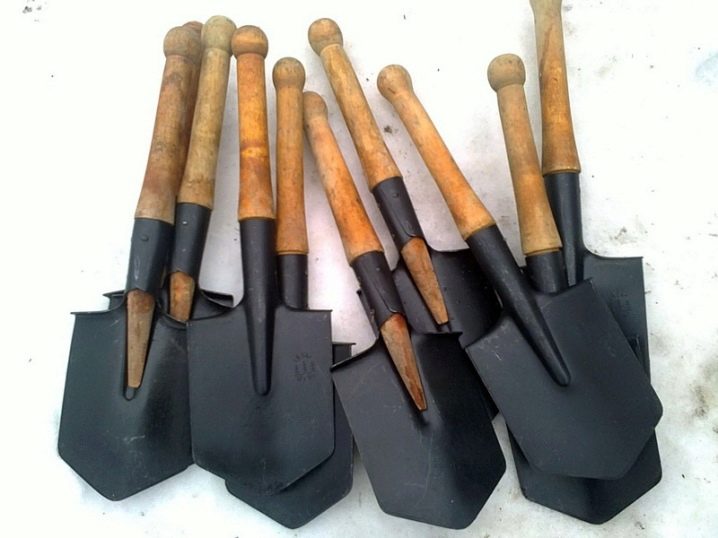
Important! In most cases, stainless steel shovels are used. Only with special requirements and a sufficient amount of money do they give preference to titanium options.
Recommendations for use
Some tourists (both before and now) are trying to use such a tool as an impromptu frying pan. But this is a very bad decision, because when heated, the blade loses its original hardening. As a result, the scapula begins to bend. Factory sharpening is only sufficient for its intended use. If you plan to use a spatula for self-defense, sharpen it regularly.
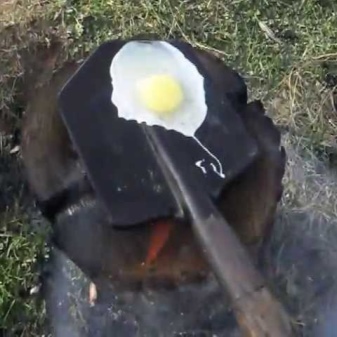

For distances up to 5 m, the non-reverse throwing method is preferred. If the distance is greater, the reverse method must be used. But it must be borne in mind that this is only a theoretical basis. And it's not just that you have to learn by doing. The sapper blade, although not a melee weapon by law, can nevertheless inflict very easily the most serious, even fatal, injuries. Therefore, with combat use, we will complete and proceed to "peaceful" work.
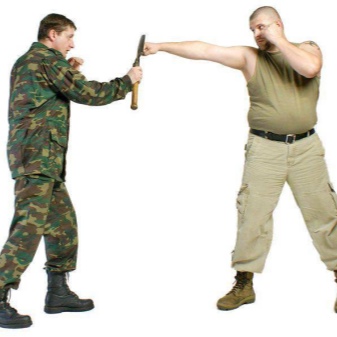

Due to the design features, all work is carried out either on all fours or lying down. Contrary to popular belief, this device works very well in vegetable gardens and orchards. In any case, for children and people of small stature, it is quite acceptable. There is no need to buy a titanium version, but it makes sense to limit yourself to the simplest version with a wooden handle. As practice shows, a small sapper shovel can help with the following tasks:
- when working in a greenhouse or greenhouse;
- when preparing land for beds and flower beds;
- while digging holes and holes;
- when laying ditches;
- in chiseling ice and even stone;
- in planting and transplanting plants.


The small sapper blade is superior to the hoe in efficiency. In addition to cutting the weeds, it turns the soil layers over. As a result, their roots look upwards and cannot germinate. "Tops" become an impromptu fertilizer. With the help of MSL, BSL and other modifications, it is possible to grind both green mass and food waste.
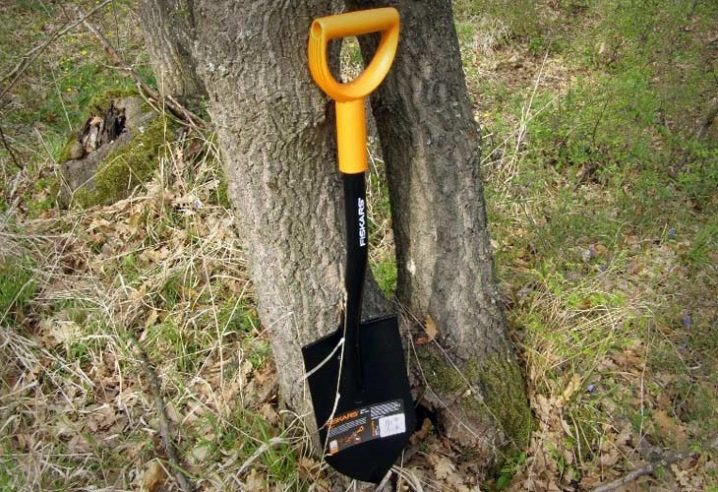
The sharpness of the tip greatly simplifies the clearing of young shrubs and even tree shoots. When digging the land, the army instruction prescribes to work no more than 10-15 minutes in a row. Then a break is made for 5-10 minutes, depending on the degree of fatigue and the intensity of the work. As practice shows, such an organization of work is more productive than continuous digging for 40-60 minutes. At the same time, fatigue is reduced.
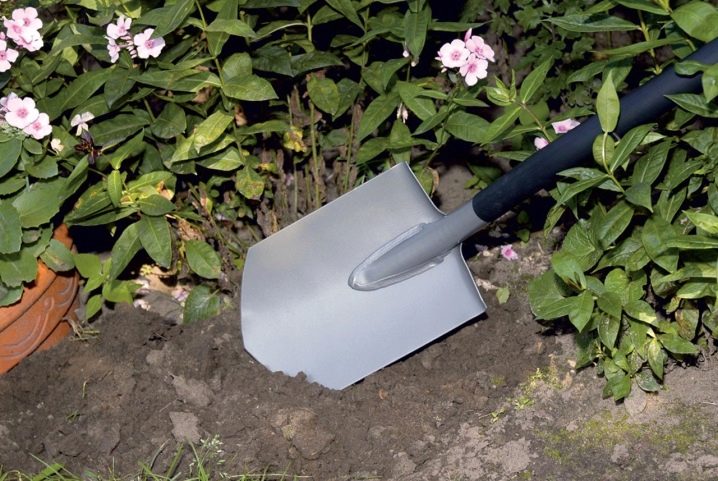
How to choose?
Modern branded models almost always come in a case. But most experts note that they are, on average, worse than the sapper shovels of older models. You can buy those that have been removed from storage in military warehouses. In most cases, these are products from the 1980s.However, the tool, produced from 1940 to 1960, is much stronger and more reliable, as it is made of thicker metal.

Some connoisseurs believe that a sapper shovel from 1890 or 1914 is a good choice. The quality of the preserved samples meets modern requirements. It is noted that even an even rusty layer does not particularly affect it. This also applies to blades produced in the 1920s – 1930s. It is worth noting that the blades of each year with an identical mark can vary greatly in characteristics.

From old foreign samples, it is recommended to pay attention to Swiss products. German products are better suited for those with a small brush. However, these are already rare goods with a high price. The folding paddles from the Second World War, made in Germany, are well balanced. It is only necessary to remember that their hinges with backlash and such a tool is unsuitable for intensive work. When choosing, you must also be guided by the following criteria:
- subjective convenience;
- the size;
- price;
- strength;
- performance.
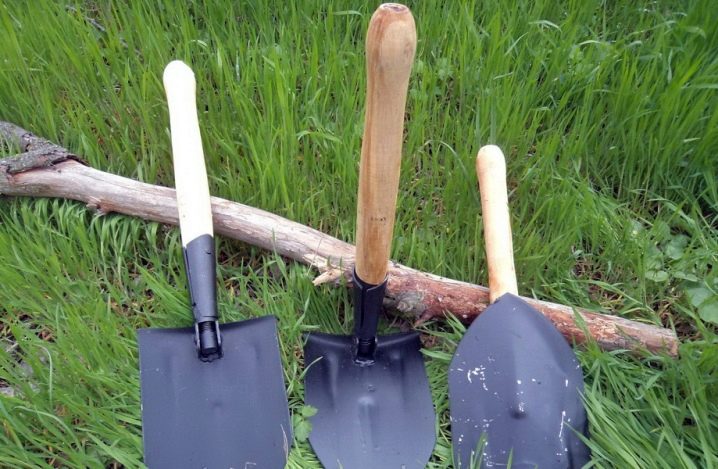
If a spatula is selected that reproduces classic military samples, you must definitely try them in your hand. A quality tool of this kind is grippy and comfortable in the hand of any size. It features a powerful, stable mount. The light roughness of the tip allows you to keep it from your hands. Of course, a "real" sapper shovel is always monolithic - it is recommended to buy prefabricated options only as a last resort.
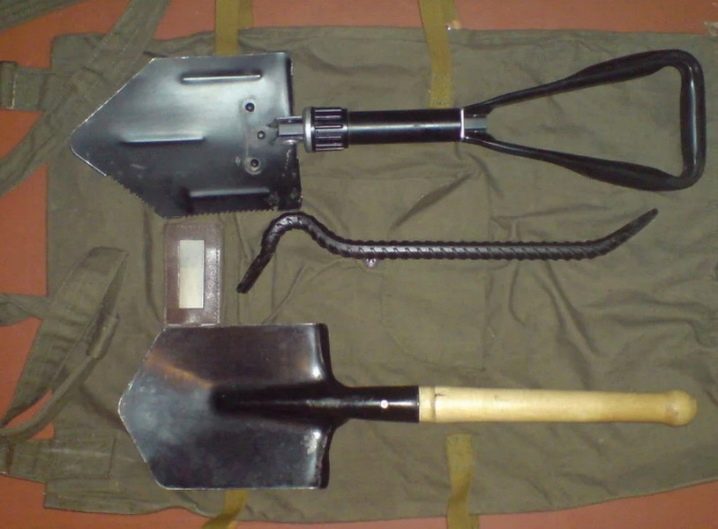
Top Models
The need to choose modern models (such as the "Punisher") is due to the fact that digging with older versions is often inconvenient. About them negatively speak, in particular, many treasure hunters and search engines. But a lot of positive feedback goes to Fiskars products made in Finland. The products of this company perform excellently even on very dense soil. Such shovels are good at chopping down roots and even small trees, as well as hammering hard stone. For amateur excavations, it is advisable to use shortened Fiskars shovels with a length of 84 cm. This length and a weight of approximately 1 kg make hiking a lot easier.
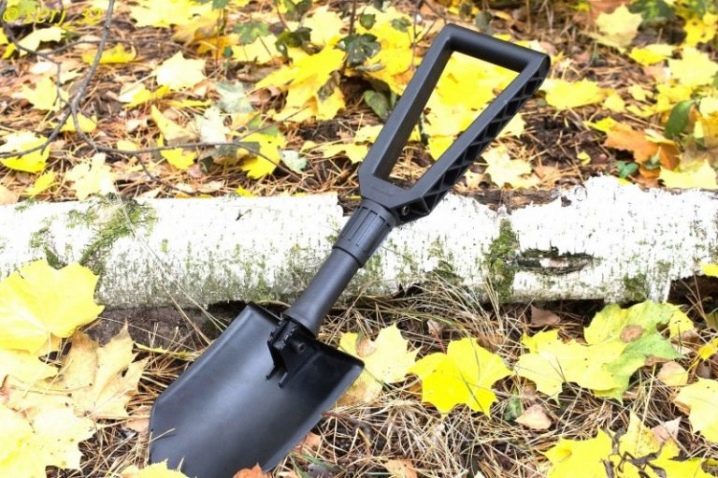
Positive assessments are also associated with the BSL-110 model. Outwardly, it looks like a garden shovel, but it allows you to successfully replace both bayonet and shovel varieties. MPL-50 has a length of exactly 50 cm, so it can be used not only as a trench tool, but also as a measuring device. Both of these versions are supplied by almost all manufacturers. Sturm supplies its customers with a replica of an old small sapper blade. The tool is made from steel and wood.
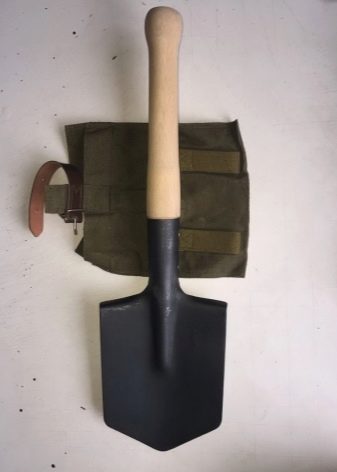
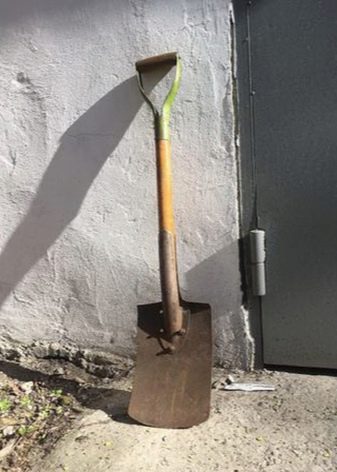
The firm "Zubr" also offers its products. The Expert model is supplied in a carrying case. According to the manufacturer, such a shovel is perfect for both field use and as a tool carried in a car. Its handle is made of selected woods, which have been given the most ergonomic shape. The wooden part is covered with a durable varnish, and the working part is made of carbon steel.

Returning to Fiskars products, it is necessary to mention the Solid model. It is recommended to be used both in excavations, and for tourist purposes, and on long road trips. The blades are made from special hardened steels that successfully cut even strong roots. Judging by the reviews, the cutting with the blade is welded as reliably and durable as possible. The handle itself is curved in such a way as to simplify the work as much as possible. The handle ends with a handle made of durable plastic.
If desired, consumers can also buy a branded backpack, in which the shovel is placed together with the metal detector.

If you need to choose a tool for field use or for limited space - it makes sense to pay attention to the Fiskars 131320 model. The device is suitable for use in shovel or hoe mode.The weight of the structure is 1.016 kg. Its length can be adjusted in the range from 24.6 to 59 cm. The blade is sharpened in such a way that it effectively pushes all types of soil, simultaneously cutting the encountered roots. The product is convenient when transporting in a car, and when carrying in a backpack, and when fastening to a belt.
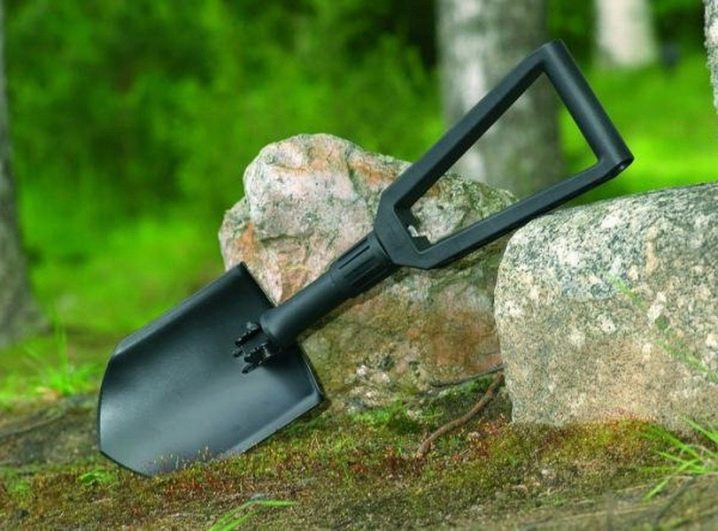
In the manufacture of the working part of Fiskars 131320, steel with the addition of boron is used. This alloying component, along with strength, increases design flexibility. You can fold and unfold the shovel with a minimum of effort, the movement is silent. The scope of delivery includes a cover made of tarpaulin. This cover helps to make both transport and storage safer.
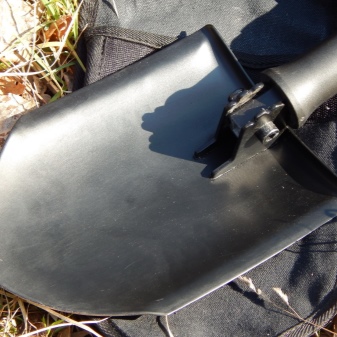
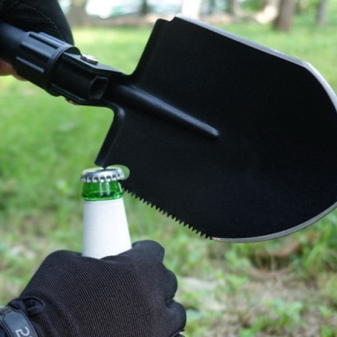
For information on how to use a sapper shovel, see the next video.



































































The comment was sent successfully.